Thoughtful engagement remains the best way to build a personal brand on LinkedIn. But, there are good ways to engage and there are bad ways to engage on LinkedIn specifically. Let’s take a deep dive into the things you don’t want to do on LinkedIn, and what you can do instead, to start creating more meaningful connections.
It’s no secret that LinkedIn is the professional social network. Gone are the days of LinkedIn as a place to brag about your extensive resume though. Amazingly, since the pandemic, and along with plenty of smart employers, LinkedIn also changed with the times and opened up conversations that saturate our personal lives in the workplace. It’s been a much needed change for those wanting to share the real world of their life as an employee or executive or entrepreneur. That said, here are some examples of the worst ways to use LinkedIn.
See more:
- 3 Easy Steps To Build Your Personal Brand On LinkedIn
- What Is Personal Brand Building On LinkedIn?
- Who Needs To Build A LinkedIn Personal Brand?
- Why Building a Personal Brand On LinkedIn Matters
- Best Post Formula For Building A Personal Brand On LinkedIn
- Storytelling: The Key To A Valuable Personal Brand On LI
Pitch Slap
The Pitch Slap is when you accept a connection request from a new stranger and they immediately follow it up with a DM selling their product or service. Ouch. Don’t be that guy. Need a good example to really help you understand what a pitch slap looks like? Check this out:
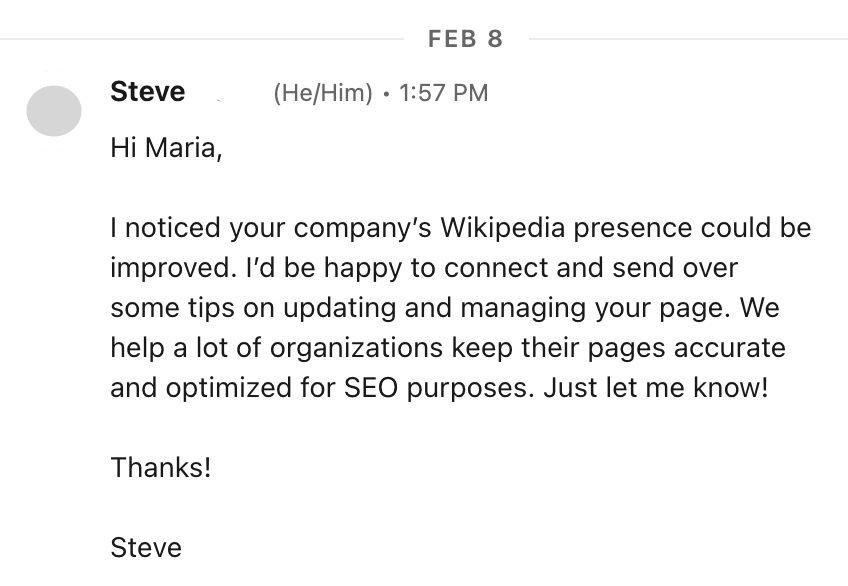
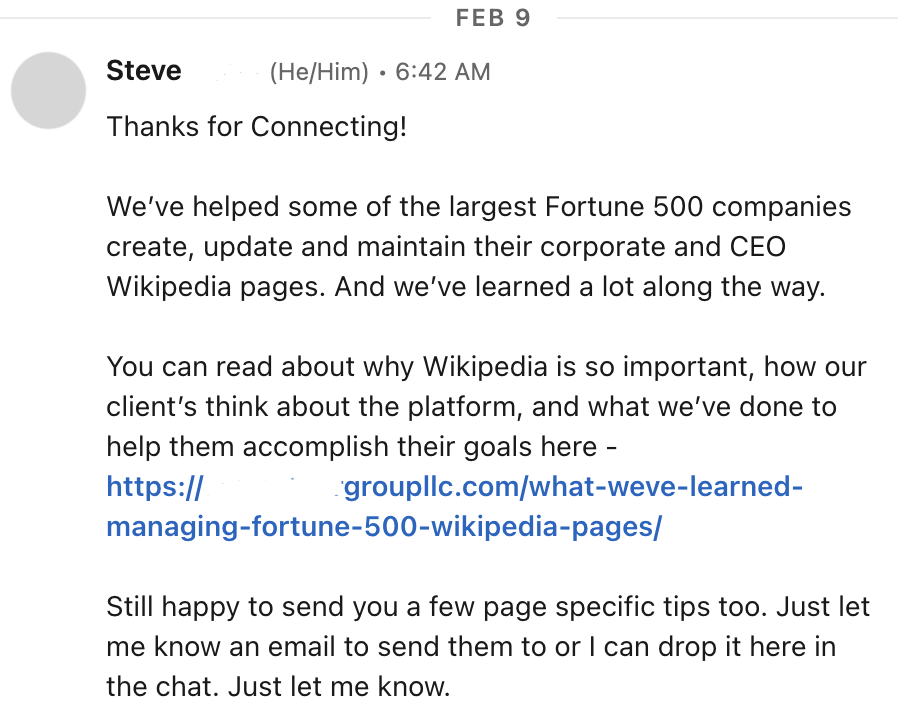
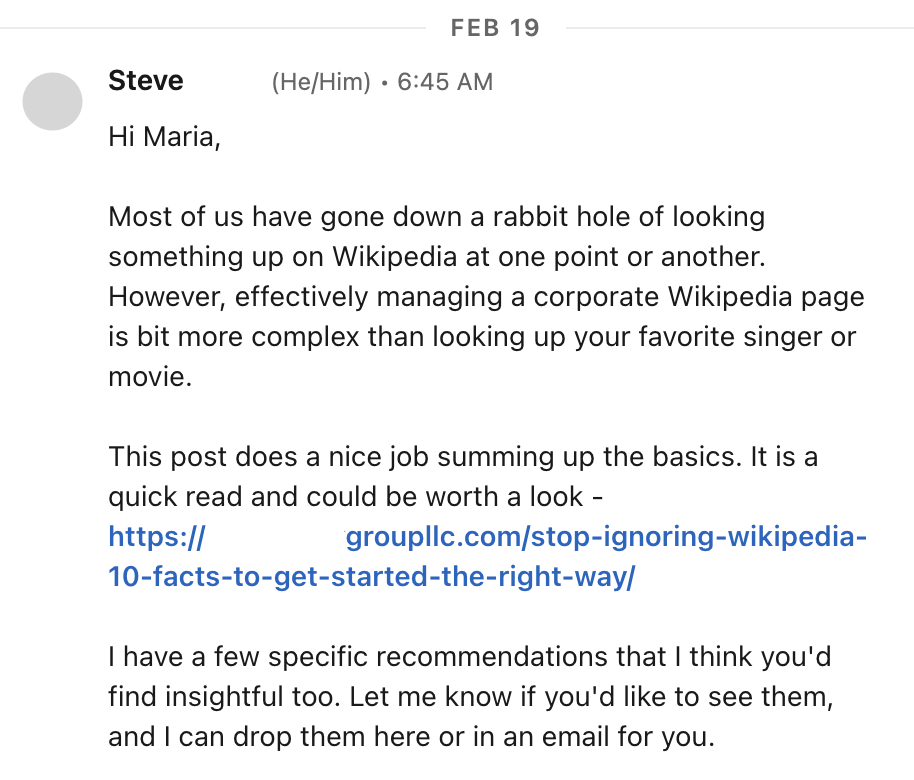
This is a real series of DMs that were sent to me immediately after I accepted Steve’s connection request. He wasted no time developing a relationship or learning about me before pitching. His loss because creating trust and building relationships is the key to successful sales. Too bad Steve didn’t understand that. I never responded to him and eventually chose to remove my connection from him after a week of unsolicited sales messages.
CEO DMs
Though the Pitch Slap remains my #1 tip for what not to do on LinkedIn, it’s followed up closely by also using the chat or DM feature to send unsolicited messages to CEOs, executives, or other c-suite professionals asking for something. Some LinkedIn users take it a step further and hunt down these professionals’ email addresses and then send them an email as well. Quite ballsy behavior between strangers.
It’s very important to remember that executives are incredibly busy people and LinkedIn is one of the last things they have time for. Many of them have a team that manages their LinkedIn presence, which allows them to engage and build an audience with the right messaging. Sending a message to an executive (or anyone for that matter!) doesn’t inherently mean that you deserve a response. Before sending unsolicited messages, consider engaging in the conversations these people are participating in on LinkedIn instead. You’ll see much more success in the comments section than in your inbox.
Thumbs Down
Another easy thing not to do on LinkedIn is using the reaction buttons (like, celebrate, support, love, insightful, funny) rather than engaging in actual commentary. True engagement happens in the comments. A typical post might get 300 reactions and only 30 comments. These are normal stats, but for real, authentic engagement, push yourself to comment or compliment or ask a question. You could also answer a question you see in the comments. Always add value to the conversation.

LinkedIn is like attending a networking event where everyone is invited to participate in all the conversations going on. You can jump around and find the right spot to engage and build relationships. Do this by searching specific keywords that resonate with you and your professional life or the social issues that matter most to you. The search panel is also a great place to find other professionals in your industry or in the industry you’re trying to break into. Pop up into these people’s conversations! Show them your face and let them hear your voice in the comments section where they already are.
Post & Ghost
Once you’ve mastered engagement on LinkedIn by thoughtfully commenting on others’ posts and leaving insightful questions or answers, it’s time to start posting your own content. LinkedIn is a social media network where the almighty text or word reigns supreme. It’s not a site where photos or videos or audio are necessary to create engaging content. Instead, use your words.
That said, don’t simply copy the URL of a blog post or article you recently wrote and paste it as the entirety of your post. Instead, give some background about why your article is important and share an insightful quote or fact you found interesting. Numbers always perform well so if you have a big stat to share, make sure you make that number shine in the text of your post before suggesting users read the rest of your article in the link attached.
Self Focus
After you get comfortable posting your own content, don’t forget to continue to engage with other users outside of your own content. Don’t just post and expect the people to show up – this isn’t the Field of Dreams (“If you build it, they will come”…). If you find that your own impressions on LinkedIn are going down, it’s time to reconsider if the algorithm is broken or if you’ve stopped engaging with others as much outside of your own posts. I recently engaged with a LinkedIn connection to remind him of that. See below:
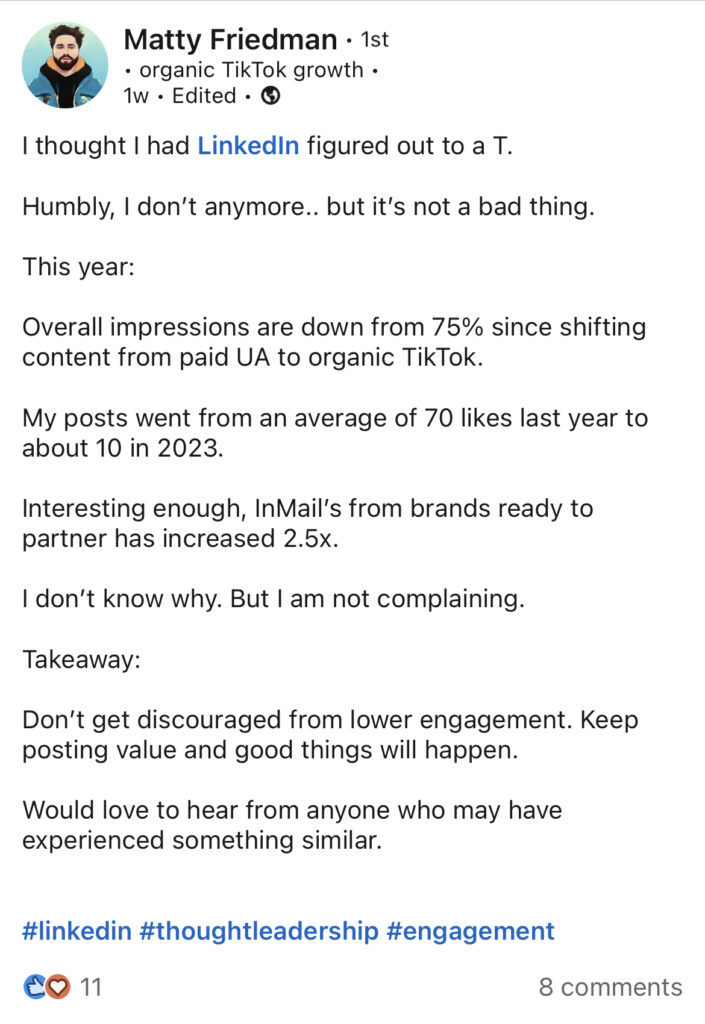
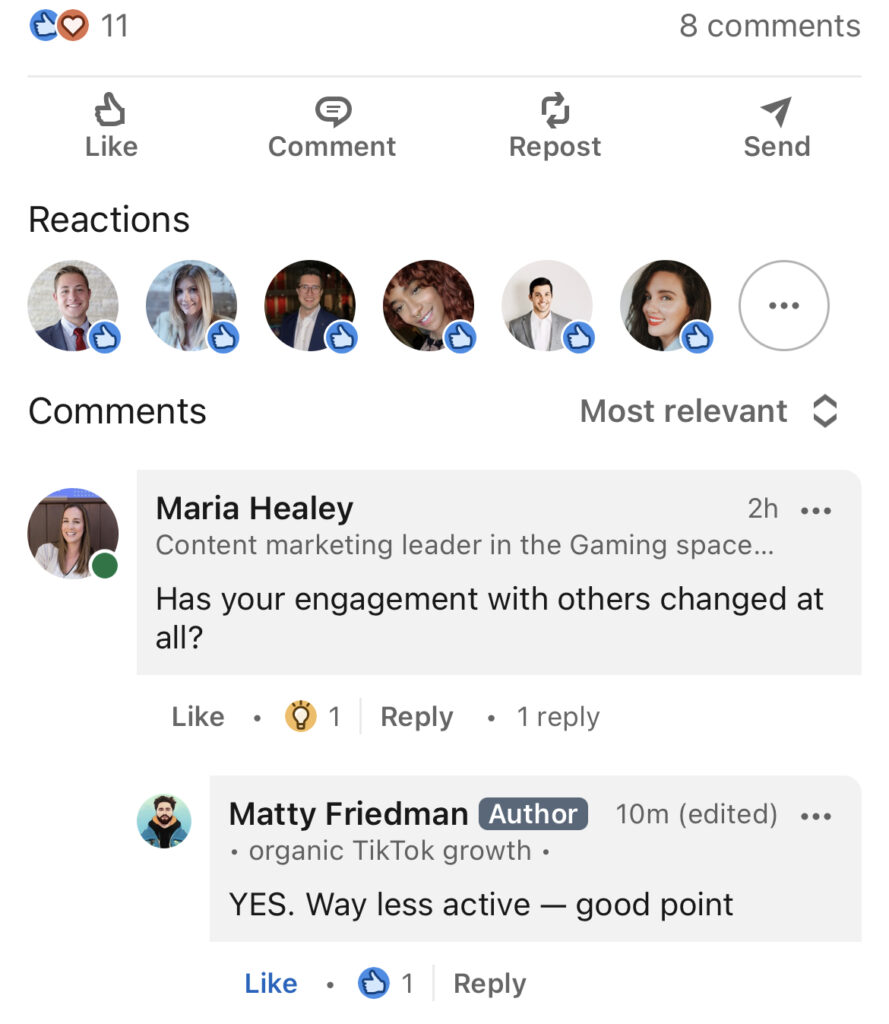
People are interested in people who are interested in them. We invest in individuals that show up and bring value to our lives. Make it a point to continue to show up in the lives and conversations of the LinkedIn users you want to surround yourself with. Need some help focusing on how you can engage more meaningfully on LinkedIn? That’s what I’m here for.
Bonus Tip: No Dates!
This should go without saying, but here goes… For the love of goddesses everywhere, please DO NOT use LinkedIn as a dating site! It’s wholly inappropriate to send unsolicited messages with sexual undertones or advancements. This may happen to men as well, but it happens to women FAR MORE OFTEN and we’re tired of it.
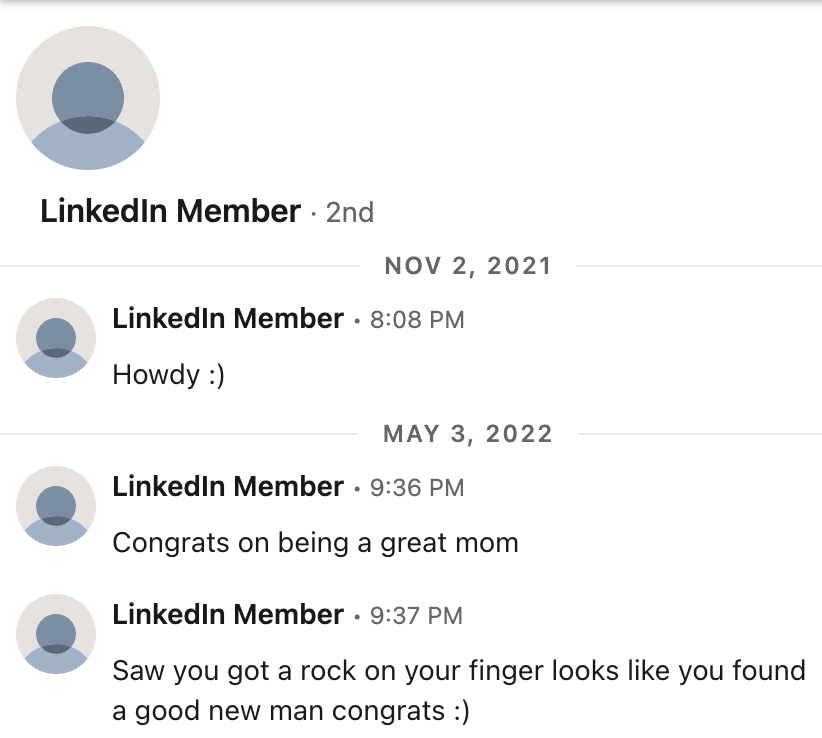
LinkedIn is a professional social network and should be treated as such by others. It’s not the place to admit to a coworker that you find them hot or tell an old colleague that you’re getting divorced and you think you’d hit it off. The DMs aren’t safe. We will out you and it will be embarrassing for you. Just don’t do it. If you wouldn’t say it in a public comment, don’t say it in a chat or DM.
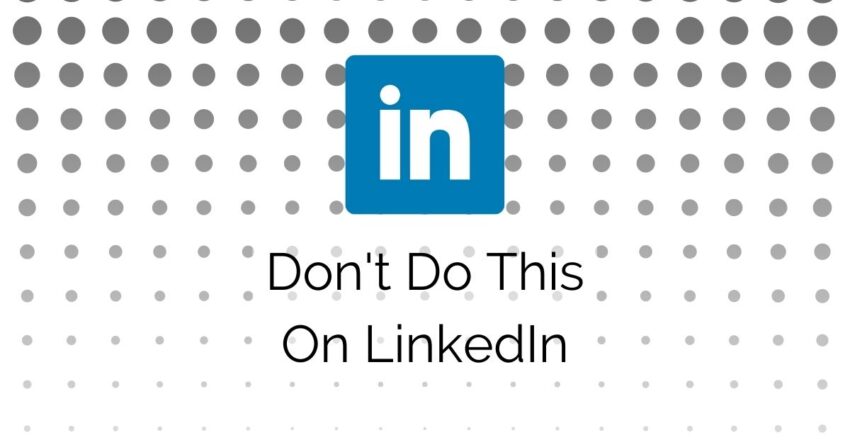
5 thoughts on “Need Help Navigating LinkedIn? Don’t Do This.”